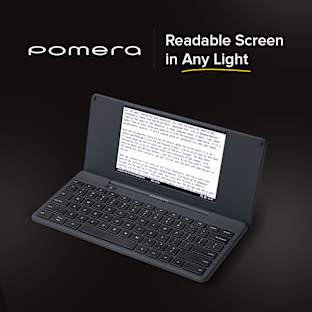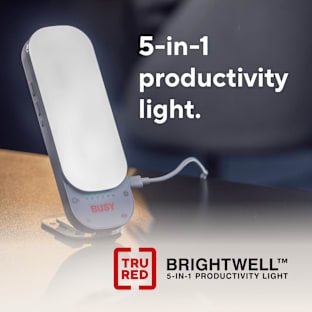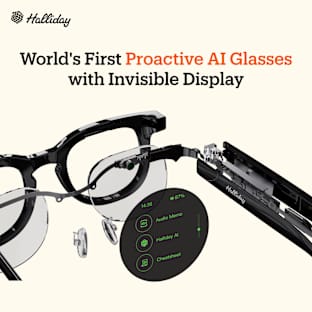![]() About Us & Formula SAE
About Us & Formula SAE
UVic Formula Motorsport is a student run, hands on
team that designs, builds and races an open-wheel formula race car. Our
club consists of over 60 passionate student members in engineering,
computer science, business and other faculties working together with one goal
in mind: to create the best Formula SAE race car possible, and
have a little fun while we are at it.
UVic Formula Motorsport Team, FSAE Lincoln 2014
Formula
SAE (FSAE) is a student design competition organized by SAE International
(Society of Automotive Engineers). Each student team designs, builds and tests
a prototype race car based on a series of rules; whose purpose is both to ensure
safety and promote clever problem solving.
FSAE
promotes careers and excellence in engineering as it encompasses all aspects of
the automotive industry including: research, design, manufacturing, testing,
developing, marketing, management and finances. FSAE takes students out of the
classroom and allows them to apply textbook theories to real world experiences.
![]()
Since our team’s formation in 2001, we have been competing in Formula SAE events around the world.
![]() Project
Project
![]() This year our team
is competing in the Formula SAE Michigan event in May 2015. We
are planning to bring a more powerful car; equipped with a new
aerodynamic body package consisting of front and rear wings, sidepods, and an
undertray-diffuser. The goal of our fundraising campaign is to raise
$6000 to enable us to design parts, purchase materials, and
manufacture this new aerodynamic package for competition. We have never had
such a large and dedicated membership before, nor the support to accomplish a
project of this magnitude. This year, with your help we would like to change
that.
This year our team
is competing in the Formula SAE Michigan event in May 2015. We
are planning to bring a more powerful car; equipped with a new
aerodynamic body package consisting of front and rear wings, sidepods, and an
undertray-diffuser. The goal of our fundraising campaign is to raise
$6000 to enable us to design parts, purchase materials, and
manufacture this new aerodynamic package for competition. We have never had
such a large and dedicated membership before, nor the support to accomplish a
project of this magnitude. This year, with your help we would like to change
that.
![]()
UVic 2014 vs UVic 2015
The new aerodynamic kit will significantly enhance our cars handling and cornering abilities, allowing us to fully utilize the 95 horsepower generated by our 600cc Honda engine. Last year we placed 23rd and this year, with these changes, we are planning to put that power to the ground and place in the top 10.
The competition itself is divided into two classes of events totaling 1000 points. The static component, worth 325 points, includes a budget and cost analysis section and design review - proving the design of your car is fully optimized for maximum performance. The dynamic component, worth 675 points, is based on the car’s on track performance, fuel efficiency and driver ability. All FSAE competitions use the same scale for scoring.
![]() The Impact
The Impact
The addition of this aerodynamic package will be
the most significant and beneficial change to our car this year. For each
competition year, a new car must be built; the car is dismantled and either
a new chassis is built or major changes are made to the car’s
systems. This year we have opted to not build a new frame, but instead undertake
the creating of this new aerodynamic kit.
![]()
UVic Formula SAE Aerodynamic Package (Rev-A)
This intensive process will help separate our car
from others; we will have the necessary data to prove that our design is
worthwhile and that it provides a large benefit to the car’s performance.
A full analysis of the aero package will be done including: research, flow
simulations, testing, and data analysis.
Our fully analyzed aerodynamic kit - accompanied
by flow simulation results and other key pieces of data - will support our
design choices during the design review component of the competition,
enabling us to score higher in the static part of the
competition. The increased downforce and engine cooling provided by the
aero package will help our car perform better in the dynamic events giving us
an edge we’ve never had before, all because of your help.
![]() Budget and Costs
Budget and Costs
The $6000 we hope to raise will be broken down into the following
amounts:
$ 500 -
Design and testing of parts
·
Scale models, stress tests, prototypes, testing equipment.
$3500 - Materials
·
Includes carbon fiber composite fabrics, resin, foam moulds, vacuum bags,
and other items related to aero-kit fabrication.
$2000 - External
labour and transportation
·
We aim to have almost all the components manufactured at our own shop
but some parts may have to be sourced from external companies
·
The transportation costs include taking the team’s trailer off Vancouver
Island to an external wind tunnel location.
![]()
![]() Challenges
Challenges
The
biggest challenge we face when creating a new aerodynamic system is that
this is our first time designing or manufacturing composite parts of this
magnitude. Although we have done aerodynamic testing and modeling in the past,
we have never had the resources to create the kit. We have created 3D models of
our designs in SolidWorks and performed 3D flow simulations in Star CCM+; now
we are prepared to fabricate and validate the package.
![]()
2D Flow Simulation
Validation of our design will require the use
of a wind tunnel and other testing equipment, which is not readily available at
the University of Victoria. As a result, to complete this full analysis and
testing of our aerodynamic body we will need to travel to locations off
Vancouver Island with several vehicles and trailers.
![]() Other Ways You Can
Help
Other Ways You Can
Help
Any donation will
help! If you are unable to make a donation we totally understand; please help
us out by spreading the word or sharing this page with a
friend!
You can follow us
on:
Twitter: https://twitter.com/UVicFSAE
Facebook: https://www.facebook.com/UVicFSAE
Instagram: @UVicFSAE
Any extra information and further team updates can be found on our website: www.fsae.ca
We would
like to extend a thank you for helping us and our project, in any way possible! We will make this project happen with your support!
__________________________________________________________________________
UPDATE: 01/04/15; By Team Lead: Otto Neumann
Design Season Update
With the build season approaching shortly, it seems like an appropriate time to give an update on the progress of the aerodynamics (aero) package and our team in general. It has been an amazing semester, with the team seeing an unprecedented increase in members. Many first and second year students have surprised us with their ability to rapidly pick up and apply high level engineering concepts. We are really looking forward to seeing how their designs perform in real world testing come March-April.
The aero package continues to be a challenging, yet very exciting project for many of our members; new competition rules have been implemented limiting the size and location of the wings and sidepods. The undertray-diffuser rules remain largely unrestricted but the changes in flow conditions caused by package components affected by the new rules required some design modifications. The team has determined the best approach to this new aero era will be to have a simple-yet-highly-configurable wing package. To date we have determined that; a lift-drag ratio of 2:1-3:1 over the average operating speeds (25-50km/hr), with a center of pressure that can be tuned to manage under/over steer at targeted sections of the competition courses is a desirable and achievable goal.
2 Dimensional
Analysis
The foundation of our design comes from a thorough 2-dimensional analysis of several wing profiles. The most efficient two element wing profile was chosen as a compromise between manufacturability concerns, available computing power, and lift-drag efficiency. An increase in chord length was seen to improve the lift-drag ratio as the FSAE car operates at much lower speeds than seen in other classes of racing. The limiting factors in choosing a chord length were found to be the ability to fit within the rule specified regions, and to maintain a balanced center of pressure between the front and rear wing. With the wing elements chosen and the sidepods/diffuser requiring a 3-dimensional analysis for accurate results, we performed half-car simulations.
3 Dimensional
Analysis
Utilizing a combination of multiple aerodynamic components requires the use of a 3-D simulation, to ensure that one component of your design does not impede the effectiveness of the overall package. The center of pressure must also be considered from the combined effect of the elements; to ensure the car is still stable, and no unwanted under/over steer is induced in the vehicle. The model of the vehicle was also simplified in several ways before importing into Star-CCM+; with parts being simplified to a more block-like shape, rather than streamlined ones. These changes generally mean drag and loss of lift compared to simulations run by other teams; but the alternative of creating a completely streamlined model would yield results artificially larger than we will see during testing. This was then meshed with several control volumes to refine and coarsen the mesh in critical areas. The final meshes fluctuated between 15-25 million cells depending on configuration and area of interest.
![]() Figure 1:
Meshed Model
Figure 1:
Meshed Model
The elements were swept through several angles of attack and speeds expected at competition resulting in a lift-drag ratio that ranges from 2:1-3:1 at the slowest to the fastest corner entry speeds seen at competition. Several other configurations, such as minimum drag configuration for acceleration, were also tested to ensure we can achieve the desired lift-drag ratio over a range of courses with a single package. Multiple physics models such as the K-Omega and Detached Eddy Simulation models were used to ensure there was a correlation of results between different simulation theories.
![]() Figure 2:
Streamlines Model at 10 m/s
Figure 2:
Streamlines Model at 10 m/s
Moving Forward
Overall, we are satisfied with the chosen wing elements and are confident large performance gains will be seen. We have a lot more we could do in Star-CCM+, such as yawing and rolling of the car along with refining the mesh, physics, and model to find the absolute best angles of attack for each possible scenario. Since currently we do not have access to the computing power required to generate a dense polyhedral mesh, with rotating reference frames, and converge on a solution in a reasonable time; we are proceeding with the manufacture of the components that are less affected from the yawing-rolling effects, such as the mounting system, end plates and wing elements.
![]() Figure 3:
Sidepod and Diffuser Velocities
Figure 3:
Sidepod and Diffuser Velocities
The diffuser-undertray and sidepods will continue to be simulated and improved. Small design changes in these two components will drastically improve the drag coefficient of car with minimal additional manufacturing time and cost. We are hoping to gain access to a high-power computing network or a supercomputer very soon, as there are many areas where a finer polyhedral mesh would provide us a more accurate look at the sources of additional drag and lift loss. We are looking forward to see how our numbers hold up when we begin testing this March!
Again, I would personally like to thank all of our sponsors and team members that have helped us get to where we are. I have also been extremely impressed by all the growth and learning from our new members that have been involved this year. None of this would be possible without the continued support of both the people inside and outside of our team.
Sincerely,
Otto Neumann
____________________________________________________________________________




























































































